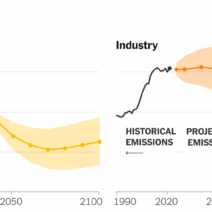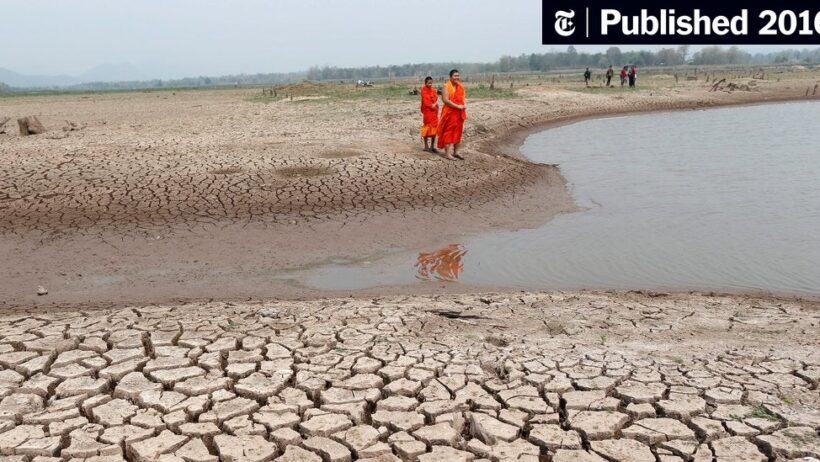The discussion surrounding climate change is often punctuated by fluctuations in global temperatures. Recently, there have been instances of temperature drops, leading some to wonder if these dips signify the waning of climate change or a deviation from the alarming trends observed in recent decades. It is imperative to dissect this question by examining the broader context of climate science, seasonal variations, long-term trends, erroneous conclusions, and the implications for policy and public perception.
To grasp the complexities of climate change, it is essential to first understand the distinction between short-term temperature fluctuations and long-term climate patterns. Climate change is the overarching alteration of atmospheric conditions over prolonged periods — typically decades to centuries. Conversely, variations in temperature can occur from seasonal changes, meteorological phenomena, and even volcanic eruptions. Thus, the retraction of global temperatures, though noteworthy, should not be considered conclusive evidence that climate change, as a systemic crisis, is over.
One pivotal concept to appreciate is the difference between weather and climate. Weather embodies the short-term atmospheric phenomena, characterized by daily and weekly changes. Climate, however, represents the average of these weather patterns observed over an extended timeline. Small changes in weather, such as temporary drops in temperature, can be misleading when assessing the underlying climate system’s trajectory. For instance, a singular cold snap in winter does not negate the overall warming trend recorded over the past decades.
To further elucidate this point, consider the role of natural variability in climate systems. There are intrinsic oscillations within the Earth’s climate, such as El Niño and La Niña phenomena, which can lead to temporary cooling or warming periods. These oscillations can significantly influence global temperature averages, introducing variability that can obscure longer-term climate trends. Instances of temperature drops may coincide with such events, leading to interpretations that are devoid of substantial scientific backing. It is critical to analyze these oscillations in conjunction with a broader dataset to accurately depict the climate’s health.
Moreover, the potential errors in interpreting climate data should not be overlooked. The natural propensity to overemphasize short-lived temperature decreases can yield misleading conclusions. Some pundits have even taken to social media, utilizing selective statistics to argue against the urgency of addressing climate change. Such rhetoric can divert attention from comprehensive climate models that incorporate a multitude of variables and assess long-term forecasts, thereby presenting a distorted narrative of an already perilous situation.
The ramifications of downplaying climate change due to ephemeral temperature drops can extend beyond mere public perception. They may influence critical policy decisions, funding for climate research, and commitments to international agreements aimed at combating climate change. Dismissing the underlying causes of climate change on the basis of temporary cold shows an ignorance of the empirical data that reflects a warming planet. Sea levels continue to rise, glaciers retreat, and extreme weather events become more frequent — these are irrefutable indications of climate change persisting regardless of short-term fluctuations.
Public perception is a vital facet of environmental activism. Individuals inundated with headlines announcing temperature drops may interpret them as a sign of relief or progress. However, it is paramount to communicate why a singular data point should not dictate the populace’s outlook on climate action. A robust educational initiative must be undertaken to foster understanding regarding the inevitability of climate change and its multifaceted consequences. People must be equipped with the knowledge to scrutinize superficial narratives that overshadow pressing scientific evidence.
In addition, education about the broader implications of climate change can encourage actionable responses. Communities must be urged to engage in resilient practices, advocate for renewable energy sources, and support policy measures that promote sustainability. Understanding the principles behind climate patterns will empower individuals to take personal actions and collectively urge policymakers toward responsible governance grounded in scientific fact. Furthermore, navigating the complexities of climate data through research and analysis is essential to guarding against climate misinformation.
In conclusion, while recent temperature drops may appear to herald a slowdown in climate change, they do not signify the cessation of one of the most pressing challenges facing our planet. They merely reflect natural variability, seasonal patterns, and external influences that can obscure the long-term, alarming trends observed in global temperatures. It is essential to maintain vigilance and recognize that action against climate change remains critical. More than ever, fostering a deep and nuanced understanding of climate science is crucial to galvanizing sustained collective effort in tackling the impending crisis. As global citizens become informed and engaged, the imperative for decisive action against climate change grows. The time to act is now; the future of our planet depends on it.








